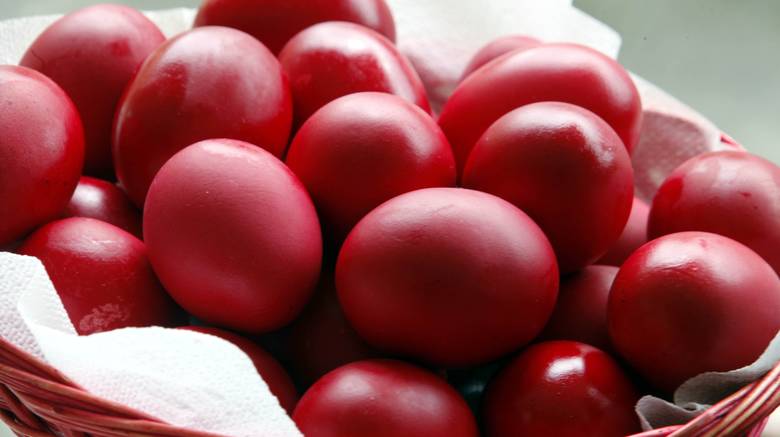But why do we dye our eggs red on Maundy Thursday? The answer is “hidden” in various versions, the interpretations given are many and varied, as are the symbolisms.
The eggs are dyed on Maundy Thursday, which is the day of the Last Supper, where Christ offered bread and wine as a symbol of His body and blood, ready to be sacrificed to free the world from the bondage of sin.
Christian tradition wants eggs, a symbol of fertility and the beginning of a new cycle of life, to be dyed red because they symbolize the Blood of Christ.
According to one version, the Virgin Mary took a basket of eggs and offered them to the guards of her Son, begging them not to torture him. When her tears fell on the eggs, they turned red.
It is also said that the egg symbolizes the tomb of Christ, which was hermetically sealed, like the shell of the egg, but it hid “Life” within it, since Christ came out of it and rose from the dead.
Another approach connects the colour red with Mary Magdalene. When the Roman emperor was informed of Christ’s resurrection, he considered the event as unlikely “as if the eggs were dyed red.” Mary Magdalene then dyed some eggs red and took them to him to confirm the fact. According to this version, Mary Magdalene went to Tiberius Caesar and announced to him that Christ had risen from the dead. At that time, someone was holding a basket of eggs next to the Emperor. Tiberius Caesar told Mary Magdalene that if what she said was true, then the eggs, from being white, should turn red. Which was done.
Constantine the Great and his mother, Saint Helen, offered red eggs at the official ceremony on Easter Sunday morning. The distinguished guests clinked the eggs with the Emperor and the Queen Mother and then had a meal.
However, these are the Christian versions that accompany the roots of the custom that “wants” eggs to be dyed red. Eggs, a symbol of birth, have been associated with pagan traditions and spring festivals, which refer to the rebirth of life after winter.
Many folklorists believe that the egg custom has its roots in ancient Egypt and Persia, where friends and relatives exchanged eggs every spring equinox.
According to the Academic Folklore Journal, eggs around the world symbolize life and rebirth. They appear at every significant moment of human life. Whether it is birth, marriage, building a new home, in sickness and death. In ancient times, eggs were buried with the dead. Eggs are offered as gifts and are a decoration on every festive occasion.
In the pre-Christian period, eggs were used for divination purposes to predict the future. For the record, however, King Edward I of England, in the 13th century, ordered 450 eggs and requested that they be coloured and decorated with gold, which he then offered as Easter gifts to his loved ones.
Source: cnn.gr

